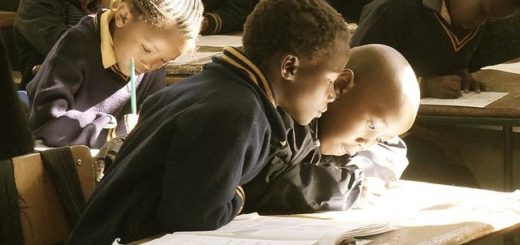Baseline Evaluation for Resilience, Health and Rights: Sustainable Solutions and Support to Vulnerable Displaced and Host Communities in Northern Kenya- Kenya Red Cross
1. Summary of the survey
1.1. Purpose: To conduct a project baseline survey targeting vulnerable displaced population and Host Communities in Northern Kenya to provide benchmark statistics that will enable tracking of project results.
1.2. Partners: Kenya Red Cross, Danish Red Cross, Grassroots Economics, the Centre for Rights Education and Awareness (CREAW) and respective County governments.
1.3. Duration: The baseline survey will be carried out by an independent consultant, and is expected to take 30 calendar days
1.4. Estimated Dates: 1st to 31st July 2022
1.5. Geographical Location: Kalobeyei and Kakuma in Turkana; North Horr, Saku and Moyale in Marsabit; Mandera north and East in Mandera; Wajir West in Wajir; Daadab, Lagdera and Mbalambala in Garissa Counties.
1.6. Target Population: Displaced populations and host communities in Northern Kenya.
1.7. Deliverables: Proposal detailing the methodology, data collection tools, data sets, draft report, presentations and final report
1.8. Methodology: The bidder to propose most suitable study design, sampling methods, sample size, data collection and analysis approaches that is suitable for this project at baseline
1.9. Evaluation Management Team: KRCS MEA&L and program representatives, and DRC representative
2. Background Information
Currently, Kenya hosts 534,622 registered refugees and asylum seekers from neighboring countries mainly Somalia and South Sudan. Turkana and Garissa counties host over 90% of the refugees in the country who demographically largely consist of women and children. Kenya stopped registering more refugees and with the COVID impact hitting hard in Somalia and South Sudan a surge of unregistered refugees has been reported in both Dadaab and Kakuma. KRCS has registered a 144% increase in the number of refugees attending along the western refugee transit corridor, a clear indication that more refugees are flocking to the country.
The refugee situation is compounded by existing challenges in the host communities in the form of high levels of food insecurity, poverty and youth unemployment combined with recurrent disasters and rising levels of conflict leading to further displacement and disruption of livelihood opportunities. The frontier sub-counties in Turkana, Marsabit, Wajir, Mandera and Garissa (project target counties), bordering South Sudan, Ethiopia and Somalia, are especially and disproportionately affected by these issues. Health and mental well-being of the target group is deteriorating and has been significantly affected by the current pandemic putting a strain on the already limited existing healthcare services. Lack of access to these services hindering the ability and capabilities of these populations to improve their livelihoods.
Through the Resilience, Health and Rights project, KRCS in partnership with the Danish Red Cross (DRC) and other partners seek to develop practical solutions to these challenges by mitigating the social, economic and health impacts of COVID-19: 1) Social (rights and social cohesion); 2) Economic (livelihood opportunities and cash/community inclusion currencies) and; 3) Health (primary health including MHPSS and SGBV prevention and management) in the frontier counties. The approaches taken involves a longer-term inclusive Whole of Society approach, a Dignity, Access, Participation and Safety (DAPS) approach, and a rights-based approach addressing structural issues facing people affected by displacement through an advocacy component.
The project will mainly work with women, girls (as described) and persons with disabilities, who face severe obstacles in accessing basic services including medical care and who are limited in their opportunity to generate an income. However, the project will also support other vulnerable groups (e.g., ethnic minorities, LGBTQi+ communities and others, who may also be embedded in the main target group).
Project Goal: Contribute to longer-term resilience, access to services and rights for the most vulnerable refugees, IDPs and host communities especially women and girls, people with disabilities and LGBTQi+ in Turkana, Marsabit, Mandera, Wajir and Garissa.
Immediate Objective/Outcome 1: Vulnerable target communities are using markets for enhanced livelihoods.
Output 1.1: Cash or Community Inclusion Currency interventions have been implemented amongst targeted communities
Output 1.2: Targeted communities trained in locally adapted Income Generating Activities (IGA)
Output 1.3: Peacebuilding and social cohesion events are held for enhanced trade between target groups
Immediate Objective/Outcome 2: Vulnerable target groups have improved health and wellbeing
Output 2.1: Primary health care, SGBV referrals and MHPSS services provided through existing health care in camps and settlements
Output 2.2: Humanitarian Service Points for health care, SGBV referrals and MHPSS services established for underserved target groups
Output 2.3: Awareness campaign on risks related to health, diseases and SGBV completed
Immediate Objective/Outcome 3: The most vulnerable groups have improved conditions in camps/settlements as a result of (government) policy change and increased awareness among displacement affected groups on their rights
Output 3.1: Advocacy and engagement strategy designed and implemented at national and local level for strengthening refugees’ access to services and livelihood opportunities
Output 3.2: Awareness raising activities on the rights and legal status in and outside camp and
settlement settings
3. Baseline Survey Objectives
- Establish baseline information against the project’s log frame indicators at community level which will be used as a threshold for this project to assess outcomes and impact.
- To document the current community engagement and accountability mechanisms in the target project area.
- To establish the correctness and feasibility of the project’s intervention logic / and further suggest improvements improvement and alterations to the project’s logic to the extent possible.
- To develop key recommendations that will inform implementation of the project
4. Key Survey Questions
Survey Objective 1:
- What is the current coverage of the log frame indicators at baseline?
- Does the coverage differ across the 5 target counties?
- Does the coverage differ across target groups?
- Are there additional indicators to assess that will add value to project processes?
- Is there a need to review the targets based on the findings?
Survey objective 2:
- Is the project relevant to the community? What’s the community’s perception of the project’s importance to their wellbeing? How should the community be made to understand the project?
- What are the existing complaints and feedback mechanisms in the community? Do the community know how they can reach KRCS in case of complaints or feedback about the project?
- What would be the preferred means of communicating complaints/feedback between KRCS and the community? How does this differ with marginalized and at-risk communities? How do we ensure effective safeguarding practices? How do we an enable an environment where individuals are able to submit complaints freely and without fear or stigma? Etc.
Survey Objective 4:
- Are there any lessons learnt and good practices that can be used to optimize the outcomes proposed for the project?
The table below shows the overall logical framework with all the indicators that may not be necessarily be measured at baseline but meant to give a general view of the project. The bidder may derive additional questions based on the logical framework relevant at baseline. The bidders should be open to any additions during the inception phase to capture relevant information that will enhance implementation approaches.
| Intervention logic | Indicators |
| Impact/Goal (Overall Objective):
The project will contribute to build longer-term resilience, access to services and rights for the most vulnerable refugees, IDPs and host communities especially women and girls, people with disabilities and LGBTQi+ in Turkana, Marsabit, Mandera, Wajir and Garissa. |
Proportion of population living below the national poverty line, disaggregated by sex and age. |
| Outcome 1:
Vulnerable target communities are using markets for enhanced livelihoods. |
Percentage of targeted households accessing basic commodities from local markets |
| Percentage of market traders able to meet demand for key commodities/goods/services | |
| Output 1.1: Communities in six informal settlements in Nairobi have improved
knowledge of and skills to address and manage key urban risks
|
Number of targeted households reached with cash or CIC interventions |
| Percentage of targeted households satisfied with CIC or cash delivery mechanisms | |
| Output 1.2: Targeted communities trained in locally adapted Income
Generating Activities (IGA) |
Number of people trained in establishing preferred IGAs disaggregated by age, gender and disability |
| Number of people implementing IGAs | |
| Output 1.3: Peacebuilding and social cohesion events are held for enhanced trade between target groups | Number of peacebuilding and social cohesion events held or supported |
| Number of people freely participating in the events
disaggregated by age, gender and disability |
|
| Outcome 2: Vulnerable target groups
have improved health and wellbeing |
Percentage of targeted beneficiaries reporting access to healthcare services |
| Output 2.1: Primary health care, SGBV referrals and MHPSS services provided through existing health care in camps and settlements | Percentage of effective referrals SGBV referrals made through existing healthcare services in camps and settlements |
| Number of people reached with MHPSS disaggregated by age, sex and disability | |
| Output 2.2: Humanitarian Service Points for health care, SGBV referrals and MHPSS services established for underserved target groups | Number of humanitarian service points and
comprehensive one stop SGBV centers established/supported |
| Number of people reached through the service points
disaggregated by age, sex and disability |
|
| Output 2.3: Awareness campaign on risks related to health, diseases and SGBV completed | Number of health, diseases and SGBV campaigns conducted |
| Number of people reached through the campaigns
disaggregated by age, gender and disability status |
|
| Outcome 3: The most vulnerable groups
have improved conditions in camps/settlements as a result of (government) policy change and increased awareness among displacement affected groups on their rights |
Percentage of refugees satisfied with camps/settlements conditions |
| Percentage of refugees aware of their rights and legal status | |
| Output 3.1: Advocacy and engagement strategy designed and implemented at national and local level for strengthening refugees’ access to services and livelihood opportunities | Number of refugee policies reviewed and implemented |
| Output 3.2: Awareness raising activities on the rights and legal status in and outside camp and settlement settings | Number of beneficiary committees established to lead community centered advocacy |
| Percentage of complaints and feedback fully addressed |
5. Methodology
The bidder to propose most suitable study design, sampling methods, sample size, data collection and analysis approaches that is suitable for this project at baseline. The bidder should give a justification on the sampling frame, propose sample size determination formulae and clearly show the proposed sample size and how it was derived. This should be clearly outlined in the bidding document/proposal and if qualified to oral stage to have further discussion with the evaluation management team. The bidder can also propose targeted respondents to interview or data sources that can answer the log frame indicators and provide comparable statistics (meaningful comparison between baseline and end line) to document any changes. The baseline survey will use the following literature and any other for reference and to inform the evaluation process further:
- Project proposal and log frame
- Existing project reports by the time of data collection.
- Documents, policies and frameworks by partners, county and national government
6. Evaluation Quality & Ethical Standards
The bidder shall take all reasonable steps to ensure that the evaluation is designed and conducted to respect and protect the rights and welfare of the people and communities involved through the use of informed consent and other support tools and to ensure that the evaluation is technically accurate and reliable, is conducted in a transparent and impartial manner, and contributes to organizational learning and accountability. Therefore, the evaluation team shall be required to adhere to the evaluation standards and applicable practices as recommended by International Federation of Red Cross and Red Crescent
Societies.
- Utility: Evaluations must be useful and used.
- Feasibility: Evaluations must be realistic, diplomatic, and managed in a sensible, cost-effective manner.
- Ethics & Legality: Evaluations must be conducted in an ethical and legal manner, with regard for the welfare of those involved in and affected by the evaluation.
- Impartiality & Independence; Evaluations should be impartial, providing a comprehensive and unbiased assessment that takes into account the views of all stakeholders.
- Transparency: Evaluation activities should reflect an attitude of openness and transparency.
- Accuracy: Evaluations should be technical accurate, providing sufficient information about the data collection, analysis, and interpretation methods so that its worth or merit can be determined.
- Participation: Stakeholders should be consulted and meaningfully involved in the evaluation process when feasible and appropriate.
- Collaboration: Collaboration between key operating partners in the evaluation process improves the legitimacy and utility of the evaluation.
It is also expected that the evaluation will respect the seven Fundamental Principles of the Red Cross and Red Crescent: 1) humanity, 2) impartiality, 3) neutrality, 4) independence, 5) voluntary service, 6) unity, and 7) universality.
7. Qualifications and Experience for Consultants
- The lead consultant must have a background in public health, social sciences, community development or related field. (At a minimum of Master’s degree level) with proven experience in one of these fields: resilience and livelihoods, MHPSS, SGBV, policy and advocacy, CEA.
- Has conducted an evaluation and published a report in the field of resilience and livelihoods or MHPSS or SGBV or policy and advocacy program, innovation etc.
- Demonstrable experience in conducting high quality evaluations for related projects in the past 3 years (sample reports will be required during the oral stage of bid analysis).
- Experience of conducting field assessments/working in the targeted regions.
- High level of professionalism and an ability to work independently under tight deadlines.
- Strong interpersonal and communication skills
- The team must have a statistician able to analyze quantitative and qualitative data as well as key technical team members (experts) to handle specific key components (MHPSS, DRR, Migration, SGBV, CEA, Policy and advocacy etc.) of the project at evaluation stage.
- Firm must have experience in using mobile phone technology for data collection.
- The lead consultant must have strong analytical skills and ability to clearly synthesize and present findings, draw practical conclusions, make recommendations and to prepare well-written reports.
- Availability for the period indicated.
8. Management of the evaluation
Duration: The baseline will begin on 1st July 2022 and the deliverables will be provided to the KRCS on 31st July 2022.
Deliverables:
- Methodology proposal detailing the baseline survey design, sampling methodology & sample frame, survey tools, agreed budget and work plan.
- Copies of original and cleaned data sets with codebook. The raw data, the database which has been cleaned (both qualitative and quantitative, including original field notes for in-depth interviews and focus group discussions, as well as recorded audio material), should be submitted together with the report. A simple inventory of material handed over will be part of the record. KRCS & DRC will have sole ownership of all final data and any findings shall only be shared or reproduced with the permission of KRCS.
- Draft baseline Report that will culminate in the final baseline report with the following elements:
- A power point presentation highlighting key findings from the baseline will be presented at a feedback meeting to be held after completing the draft report. The bidder will be expected to disseminate the survey findings at the forums that will be organized by KRCS.
- Final Baseline Survey Reports – submit at least 3 hard copies and one electronic copy of the report by the agreed timeline.
Baseline Evaluation Management Team:
The Survey management team will be composed of the Kenya Red Cross Program steering committee and the consulting team. The DRC and Grassroots team will be invited to meetings and review of documents. KRCS M&E representatives will lead the team.
Role of KRCS (Project and M&E team)
- Lead the recruitment and survey process
- Coordinate the assessment implementation process through the KRCS M&E unit
- Review of assessment products including tools and reports
- KRCS will organize logistics for the assessment team
- Avail data collectors within agreed criteria
- Avail of all necessary documents for desk review
- KRCS will be the link between the community and the consultant
- Custodian of all data generated from the assessment
- Organize dissemination forums as necessary
Role of Danish Red Cross
- Participate in the TOR development, inception report and tools review.
- Review and give feedback on all the reports submitted
- Final approval of the report
9. Application Requirements
Application materials shall include:
- A written response to this TOR in terms of a proposal detailing the technical understanding of the task, proposed methodologies of the evaluation, expected activities and deliverables, proposed work plans with schedule, and financial bids. See Annex 1
- Detailed CVs of all professional (s) who will work on the evaluation. If there is more than one contractor on the proposed evaluation team, please attach a table describing the level of effort (in number of days) of each team member in each of the evaluation activities. See Annex 3
- Professional references: please provide at least three reference letters from your previous clients and full contact details of the referees.
- At least 2 evaluation reports/summary undertaken of similar programmes and context
10. Submission of proposal
The Technical Proposal MUST be prepared in conformance to the outline provided in Annex 1 while the financial proposal shall conform to the template provided in Annex 2. Team composition should conform to Annex 3
The bidders MUST provide a technical and financial proposal in two separate folders clearly marked “Technical Proposal +Name of the bidder” and “Financial Proposal +Name of the bidder” and the email subject be marked “Tender No. PRF09279 “Resilience, Health and Rights: Sustainable Solutions and Support to Vulnerable Displaced and Host Communities in Northern Kenya”
The proposals must be sent on mail to tenders@redcross.or.ke by 15th June 2022 at 11:00 AM.
Tenders will be opened immediately thereafter in the presence of the bidders or their representatives who choose to attend our online tender opening meeting on the same day at noon. Interested bidders to confirm participation on mail tenders@redcross.or.ke and thereafter we will share the Teams link for the meeting.
Download the full tender document at: https://www.redcross.or.ke/tenders








